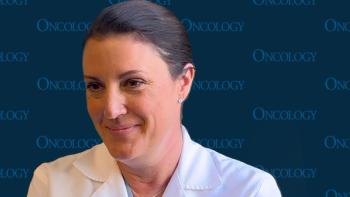
Oncology NEWS International
- Oncology NEWS International Vol 8 No 3
- Volume 8
- Issue 3
Paclitaxel Seems Equivalent to FAC as Neoadjuvant Chemo
SAN ANTONIO-Preliminary results from an ongoing clinical trial suggest that neoadjuvant chemotherapy of breast cancer with paclitaxel (Taxol) alone produces response rates comparable to those achieved with the three-drug FAC (fluorouracil, Adriamycin, cyclophosphamide) regimen.
SAN ANTONIOPreliminary results from an ongoing clinical trial suggest that neoadjuvant chemotherapy of breast cancer with paclitaxel (Taxol) alone produces response rates comparable to those achieved with the three-drug FAC (fluorouracil, Adriamycin, cyclophosphamide) regimen.
Speaking at a satellite symposium held in conjunction with the 21st Annual San Antonio Breast Cancer Symposium, Aman Buzdar, MD, expressed optimism for neoadjuvant use of paclitaxel, but he cautioned that the 23-month follow-up is too brief to draw definitive conclusions. With longer follow-up, we will know the true value of paclitaxel in neoadjuvant breast cancer therapy, said Dr. Buzdar, a breast medical oncologist at M.D. Anderson Cancer Center.
The current trial has its origin in an M.D. Anderson study of 25 patients with metastatic disease treated with paclitaxel. The treatment led to objective responses in two-thirds of patients, including complete responses in 12%. Only one patient failed to achieve at least a minor response, Dr. Buzdar said.
Results of this small-scale evaluation subsequently were confirmed in a similar study at Memorial Sloan-Kettering Cancer Center. Almost three-fourths of 26 patients had major responses, including complete responses in 12%.
174 Patients Randomized
On the basis of these encouraging results, we decided to put paclitaxel to the test in a neoadjuvant fashion to see what the effect would be on cytoreduction and antitumor activity, Dr. Buzdar said.
Between 1994 and the middle of 1998, investigators randomized 174 patients to paclitaxel monotherapy or to neoadjuvant treatment with conventional FAC.
Paclitaxel was administered at a dose of 250 mg/m²the same dose used to treat metastatic breast cancer. Treatment was repeated every 3 weeks for four cycles, followed by surgery, an additional four cycles of FAC, and radiation therapy. Patients older than 50 years also will receive tamoxifen (Nolvadex) for 5 years.
Patients in the two treatment groups had identical 79.3% overall response rates. Paclitaxel led to complete re-sponses in 26.4% of patients vs 24.1% with FAC. FAC resulted in more patients with no evidence of residual disease (17.2% vs 5.7%), whereas more pacli-taxel-treated patients had DCIS only (8% vs 4.6%) or minimal residual disease (26.4% vs 11.5%) after neoadjuvant therapy. Dr. Buzdar also noted that paclitaxel treatment was associated with a higher rate of breast-conserving surgery, 46% vs 37% for patients receiving FAC.
At a median follow-up of 23 months, patients in the paclitaxel cohort had superior disease-free survival rates at 1 year (100% vs 94%) and 2 years (94% vs 89%). Dr. Buzdar emphasized that longer follow-up is needed to provide a true indication of the impact of the two neoadjuvant regimens on survival.
Articles in this issue
over 26 years ago
Strong Upsurge in HIV and Tuberculosis Predictedalmost 27 years ago
NCAB Urges Repeal of Law Requiring Research Data Disclosurealmost 27 years ago
Response to Ontak Leads to Improved QOL in CTCLalmost 27 years ago
Medicare Will Phase in Risk-Adjusted HMO Payments Over 5-Year Periodalmost 27 years ago
Patients Need to Understand Cancer Testing Limitationsalmost 27 years ago
Assessing the Value of the Pain Intensity Assessment Toolsalmost 27 years ago
More Than 500 Clinical Practice Guidelines Now Available On-linealmost 27 years ago
Inefficient Burning of Fossil Fuels Puts Children at Riskalmost 27 years ago
IOM Urges Replacing Race With Ethnicity in Cancer StudiesNewsletter
Stay up to date on recent advances in the multidisciplinary approach to cancer.


















































































